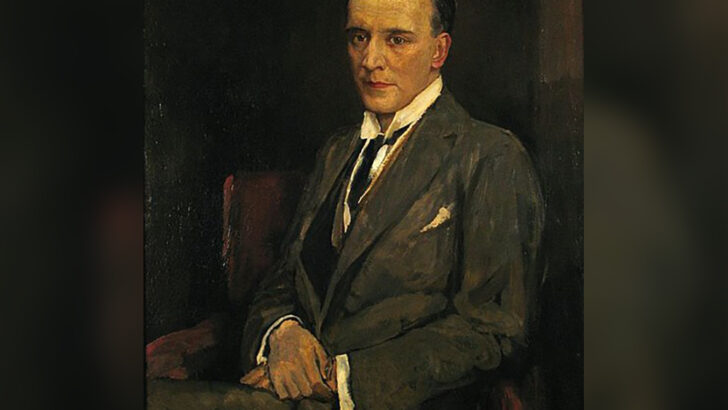Walled in by Hate: Kevin O’Higgins,His Friends and Enemies, Arthur Mathews
(Merrion Press, €19.99).
The tragedy of the Irish Civil War and its legacy of hatred loom large in this new biography of Kevin O’Higgins by Arthur Mathews.
Data on the Civil War fatalities recently published by a team of researchers in UCC highlights the extent of the tragedy. Between June 1922 (the bombardment of the Four Courts) and May 1923 (when the order to dump arms was issued by the IRA leadership), there were 1,426 fatalities directly attributable to the conflict. Of these, 648 were pro-Treaty, 438 were anti-Treaty, 336 were civilians and four were Crown Forces. The anti-Treaty number includes 81 men executed by the State – not 77, which is usually given as the number of the executions.
As Mathews points out, historians and others who have written about the period have displayed a ‘notable bias in favour of the republicans’”
These figures do not include revenge killings after the end of the Civil War, the most notable of which were the brutal murder of Noel Lemass in November 1923 and the assassination of Kevin O’Higgins on 10 July 1927.
The fact that fatalities on the pro-Treaty side were significantly greater than those on the anti-Treaty side will come as a surprise to many. Much of the discourse on the Civil War has tended to focus on the Government’s draconian measures – especially the reprisal executions of O’Connor, Mellows, Barrett and McKelvey in December 1922 – to the exclusion of the actions of anti-Treatyites. As Mathews points out, historians and others who have written about the period have displayed a “notable bias in favour of the republicans”. But there were atrocities aplenty on both sides, and the reprisal executions were in response to the shooting by the IRA of two pro-Treaty TDs, one fatally. The IRA had threatened to kill pro-Treaty TDs and Senators on sight, and they burned the houses of a number of these TDs and Senators – including the home of W.T. Cosgrave, president of the Executive Council of the Free State.
Opprobrium
O’Higgins attracted much of the opprobrium for the Government’s policies – partly because he was more vigorous in defending them in the Dáil and elsewhere than were his colleagues – and his image as the ruthless prosecutor of the campaign against the IRA was copper-fastened by his (albeit reluctant) assent to the execution of Rory O’Connor who had been best man at his wedding about a year earlier. His defence – and it was a valid one – was that the armed opposition of anti-Treatyites to the democratically elected government represented an existential threat to the new State and had to be defeated. If, as Yeats wrote of him, he was “incapable of remorse” that was because he believed in the necessity of the actions that were taken. Few of the major players on either side in the Civil War ever showed much remorse for their actions.
Mathews is clearly of the view that O’Higgins and his colleagues probably struck the right balance in defending the State. Their strategy was, in any event, successful”
The conundrum which O’Higgins and his colleagues faced in 1922-3 is one which many liberal democratic societies still face today – namely, to what extent and in what circumstances a democratic society which broadly espouses liberal values may be justified in adopting extreme measures, often illiberal in character, in order to protect itself and its values. Mathews is clearly of the view that O’Higgins and his colleagues probably struck the right balance in defending the State. Their strategy was, in any event, successful – and the democratic institutions of the State were finally consolidated by legislation introduced immediately after O’Higgins’ assassination that forced Fianna Fáil, the new anti-Treaty political party formed by Éamon de Valera in 1926, to abandon their absentionist policy and enter Dáil Éireann.
O’Higgins was born in 1892 in Stradbally, Co. Laois. His father, who was himself killed by the IRA during the Civil War, was a medical doctor. His mother was the daughter of T.D. Sullivan, editor of The Nation newspaper and author of numerous ballads of a romantic nationalist character. He studied for the priesthood at Maynooth and later in the Carlow diocesan college but was expelled from both for smoking. He was elected Sinn Féin MP for Queen’s Co. in the 1918 General Election and soon emerged as a leading figure in the First and Second Dáils, holding junior ministerial office in the Department of Local Government. He became Minister for Home Affairs following the death of Michael Collins in August 1922 and was also vice-president of the Executive Council of the Free State from December 1922 until his death. His ministerial post was re-styled Minister for Justice in 1924. In 1927, he held the additional portfolio of Minister for External Affairs.
Comprehensive
Mathews’ book is based on a comprehensive trawl through the existing literature on the period of the Civil War and afterwards, and is a compelling and sympathetic account of O’Higgins’ life. It explores his personal, as well as his public, life – emphasising his strong Catholic values and his devotion to his wife and young family. Nevertheless, as is now well known, O’Higgins was infatuated in his last years with the alluring Hazel Lavery – who had also, allegedly, charmed Micheal Collins. Mathews’ verdict on their affair is that it was “the oddest chapter” in O’Higgins’ life, hard to reconcile with “the image of the public man – stern, disciplined, aloof, puritanical.”


 Kevin O’Higgins, painted by Sir John Lavery, the portrait Yeats refers to in his poem about his past friends
Kevin O’Higgins, painted by Sir John Lavery, the portrait Yeats refers to in his poem about his past friends